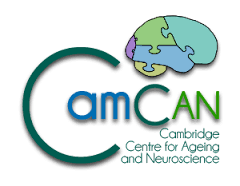CBSU bibliography search
To request a reprint of a CBSU publication, please
click here to send us an email (reprints may not be available for all publications)
The Neuropsychological Sequelae of Frontal-Lobe damage
Authors:
Harrison, J.E. & OWEN, A.M.
Reference:
In J.E. Harrison & A.M. Owen (Eds.), Cognitive Deficits in Neurological Disorders. London: Dunitz
Year of publication:
1999
CBU number:
4011
Abstract:
Historically the prefrontal cortex has been symbolically described using a multitude of vivid metaphors, ‘uncharted provinces of the brain’ (Goldman-Rakic, 1984), being a typical example. Recently, however, cognitive and brain scientists have begun to unravel the mysteries of the frontal lobe, yielding what must now be one of the most exciting and important areas of research in contemporary neuroscience. The fact that the functional anatomy of this region has remained unclear for so long can be attributed to two general principles. First, while the frontal lobe undoubtedly contributes to many aspects of cognition and behaviour it does so via reciprocal connections with multiple other cortical and subcortical regions. Thus, while studies of patients with frontal-lobe damage have implicated this region in functions as diverse as attention, memory, language, planning, social cognition and motor control, the specificity of this contribution often remains in some doubt; patients with damage to posterior cortical regions, for example, often exhibit behavioural changes reminiscent of those observed after frontal-lobe damage. Second, the frontal cortex is not a homogenous region of the brain but comprises several cytoarchitectonic areas that differ in terms of their connections with other cortical and subcortical areas (Pandya and Barnes, 1987). Relative to the enormous amount of information that is available about the structural and functional organisation of the monkey brain, very little is known of the connections between specific cortical areas in humans. Even with the advent of high resolution structural imaging, in patient studies, it is often not possible to relate any particular area of the frontal cortex to a given cognitive process with any degree of anatomical precision since the excisions are rarely confined to specific cytoarchitectonic areas. Rather than attempting a broad brush overview of this complex field, this chapter will focus on three interrelated neuropsychological themes that have emerged as consistent hallmarks of the so called ‘frontal-lobe syndrome’; namely, deficits of planning, attentional ‘set’ and memory. In each case, the specificity of the frontal-lobe impairment will be considered, together with related evidence from functional neuroimaging

 MRC Cognition and Brain Sciences Unit
MRC Cognition and Brain Sciences Unit

